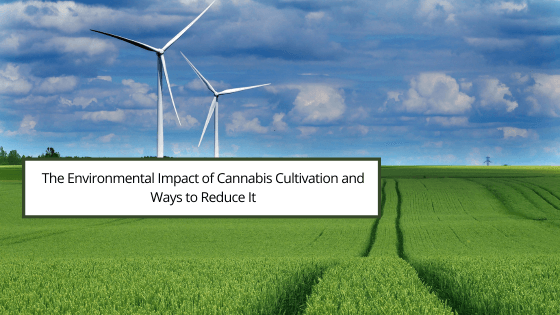The legalization of cannabis in many regions has led to a rapid expansion of the industry, but it’s essential to consider the environmental impact of cannabis cultivation. Large-scale indoor and outdoor cultivation practices can contribute to carbon emissions, water depletion, and ecosystem disruption. However, by implementing sustainable practices, the cannabis industry can mitigate its environmental footprint.
Energy Consumption in Indoor Cultivation
Indoor cannabis cultivation requires extensive energy inputs, mainly for lighting, heating, ventilation, and air conditioning. This high energy demand contributes to greenhouse gas emissions. To reduce energy consumption, growers can transition to energy-efficient lighting systems such as LEDs, implement advanced climate control systems, optimize insulation, and utilize renewable energy sources like solar or wind power.
Water Usage and Conservation
Cannabis cultivation requires substantial water resources, which can strain local water supplies and ecosystems. Implementing efficient irrigation methods like drip systems, smart sensors, and automated controls can minimize water waste. Additionally, capturing and reusing runoff water and employing water-efficient cultivation techniques like “dry farming” can further reduce water consumption.
Soil Health and Erosion Prevention
Intensive cultivation practices, such as excessive tilling and chemical inputs, can degrade soil quality and lead to erosion. Adopting regenerative farming practices, including organic cultivation methods, cover cropping, composting, and soil remineralization, can enhance soil health, increase biodiversity, and minimize erosion risks. These practices promote sustainable soil management and long-term ecosystem preservation.
Integrated Pest Management (IPM)
Traditional pesticide use in cannabis cultivation can have detrimental effects on the environment, pollinators, and human health. Implementing Integrated Pest Management (IPM) strategies can minimize the need for chemical pesticides. This approach involves utilizing biological controls, beneficial insects, crop rotation, and companion planting to manage pests effectively while reducing reliance on harmful chemicals.
Waste Management and Recycling
Cannabis cultivation generates significant amounts of waste, including plant material, packaging, and nutrient containers. Implementing waste management and recycling programs can divert waste from landfills. Composting plant material, using eco-friendly packaging, and recycling nutrient containers can reduce environmental impacts and support a circular economy.
Community Engagement and Education
Engaging with local communities and fostering environmental awareness is crucial for sustainable cannabis cultivation. Collaboration with environmental organizations, hosting educational workshops, and sharing best practices with neighboring farms can promote responsible cultivation practices and contribute to the overall environmental stewardship of the industry.
Research and Innovation
Continued research and innovation are key to developing sustainable cultivation methods in the cannabis industry. Investments in technologies such as vertical farming, aquaponics, and aeroponics can optimize resource use, increase crop yields, and reduce environmental impacts. Collaborations between researchers, growers, and industry experts can drive the adoption of sustainable practices and influence policy changes.
The cannabis industry has the opportunity to proactively address its environmental impact by embracing sustainable cultivation practices. It is crucial for cannabis cultivators, policymakers, and consumers to work together toward a sustainable and ecologically conscious future for the cannabis industry.

